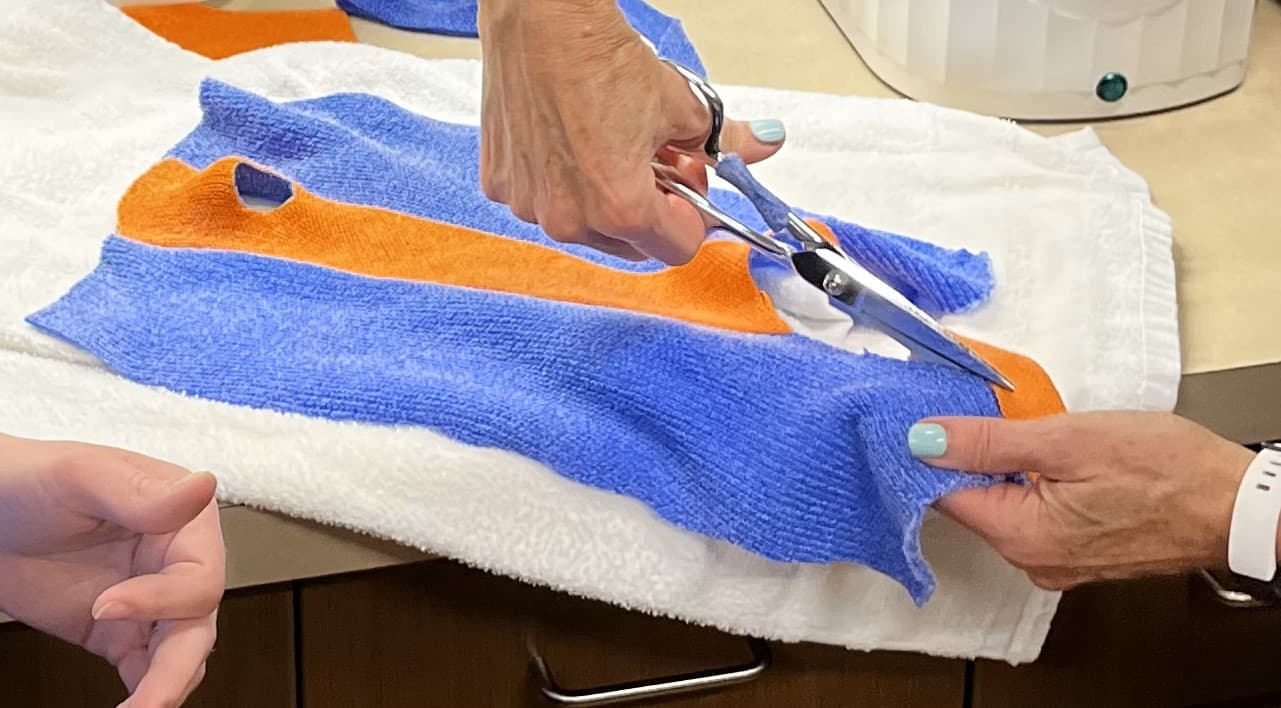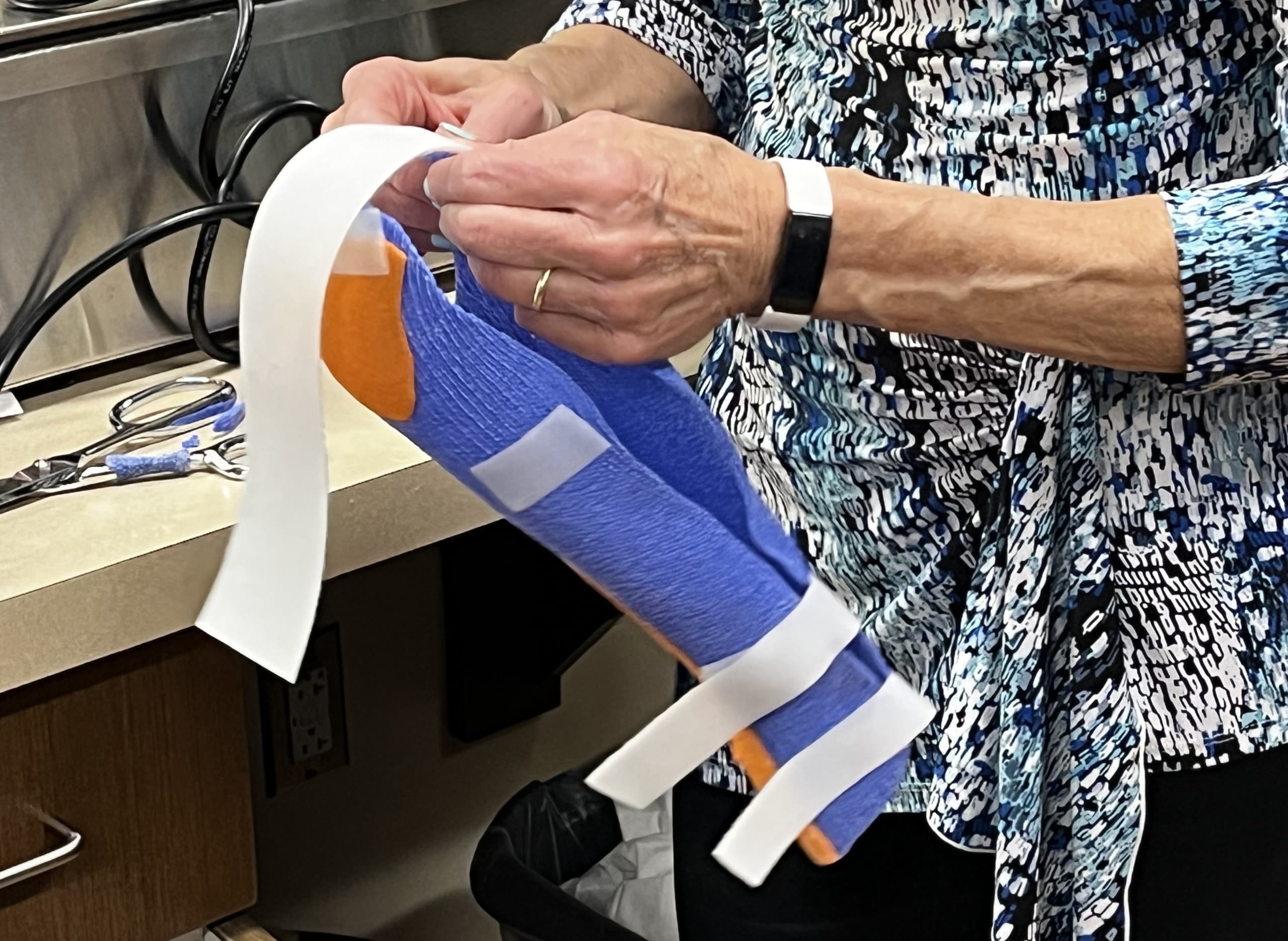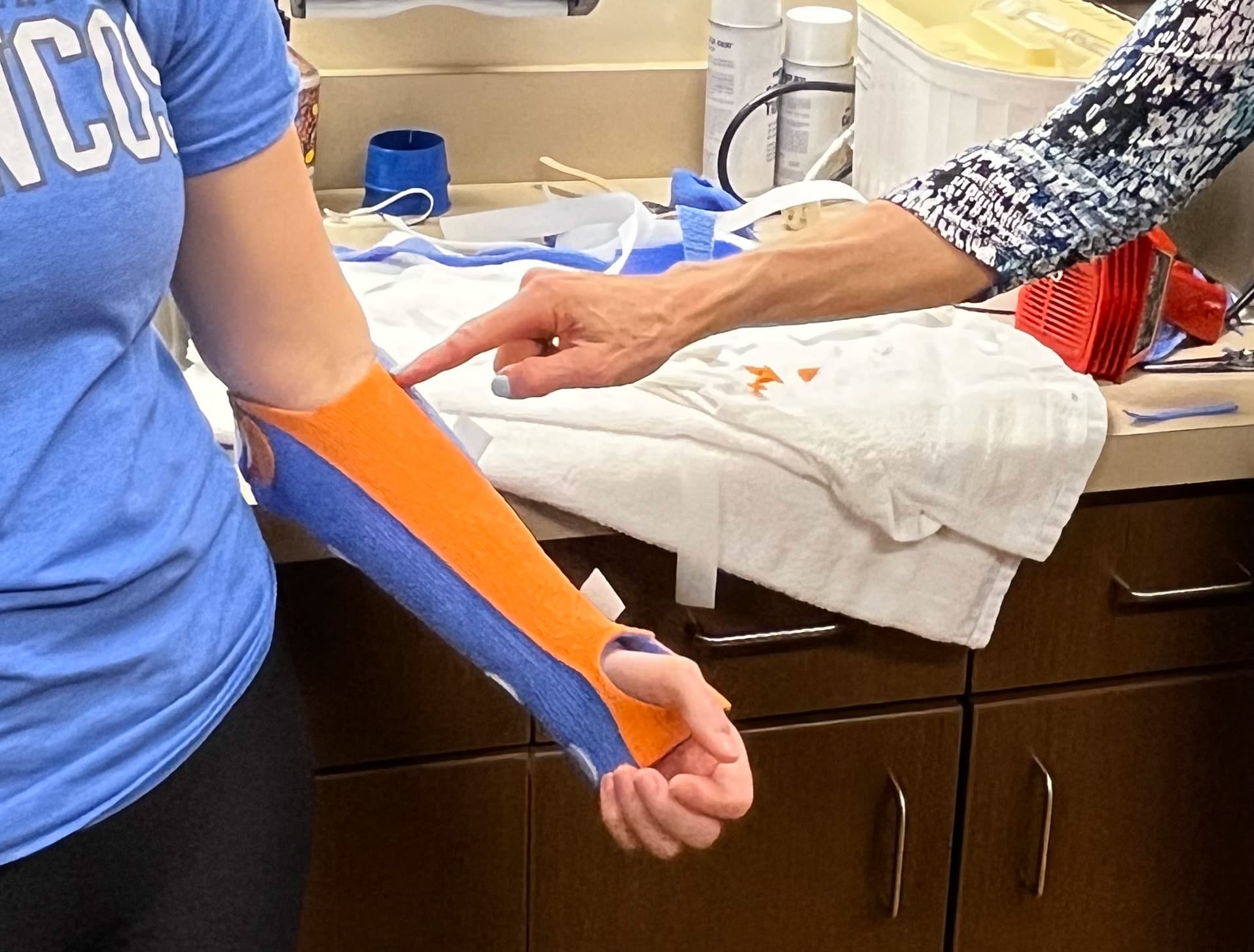
The Muenster is a useful orthosis for preventing full forearm pronation and supination. It helps to position the forearm in a neutral position so that injured structures can heal.
We go into further detail about this design and explain how to fabricate the orthosis from Orficast More. The new 30 cm version now allows you to fabricate even larger, arm-based orthoses in the unique knitted thermoplastic.
The Muenster orthosis helps to prevent full active forearm rotation. This way, injured tissues and structures can heal without overstretching or shortening of tissue length. This may be particularly important for certain elbow pathologies or after trauma/surgery of the Radius, Ulna, Distal Radial-Ulnar joint (DRUJ), Proximal radial-ulnar joint, and TFCC structures.
The Muenster is typically used to immobilize the forearm in the following pathologies:
An elastic-based, coated material is highly recommended for the Muenster Orthosis. The following materials all work very well for this design:
Thanks to the non-stick coating of the above thermoplastics, you can pinch the material together at the posterior elbow and on the ulnar border. Both hands are free to position the wrist in slight extension and the forearm in a neutral position.
Specific advantages of Orficast More 30 cm are the easy pattern making and application of an otherwise more challenging fabrication. The fabric-like material provides comfort and makes for a relatively light-weight orthosis.

Preparation of the material

Molding the Orthosis

Finish the orthosis

Wearing schedule
This orthosis should be worn full time immediately after surgery of the involved structures. The patient could be instructed in gentle elbow range of motion exercises.
